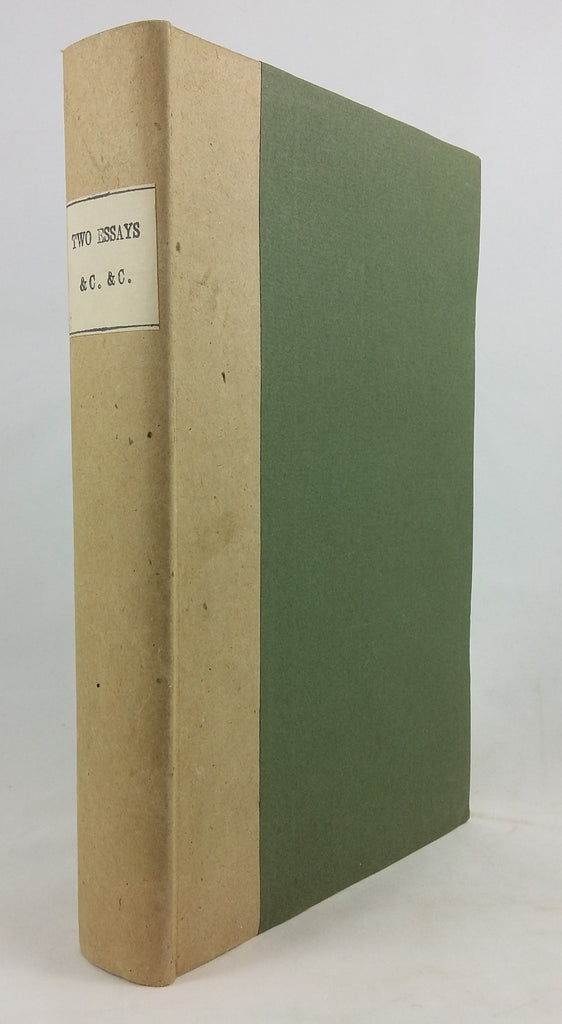Two Essays: One upon Single Vision with Two Eyes; the Other on Dew.
WELLS, William Charles


A Letter to the Right Hon. Llloyd, Lord Kenyon and an Account of a Female of the White Race of Mankind, part of whose Skin resembles that of a Negro; with some observations of the causes of the differences in colour and form between the White and Negro Races of Men. With a Memoir of his Life, Written by Himself.
London and Edinburgh: Longman, Hurst, Rees, Orme, and Brown; Archibald Constable and Co.. 1818.
First and only collected edition. 8vo (225x135mm). pp. [viii, versos blank], vii-lxxiv, [i] bl., 439, (1) imprint. Occasional light spotting, some early leaves with light dampstain at upper inner margin. Uncut and partly unopened. Blue grey paper covered boards, backed with beige paper and with paper label on spine. ffep has the ownership inscription of G (?) Falconer, Edinburgh, 1825. A very good copy.
Wells’s “Two essays” contains important contributions in the fields of ophthalmology, meteorology, ventilation, and evolution. “In his “Essay upon single vision with two eyes”, originally published in 1792, Wells presents a new theory of binocular vision based on the concept of visible direction and experimental evidence on the duration of impressions on the retina. Wells’s theory of visible direction had a great influence on the science of spectacle making in the early part of the nineteenth century”. (Becker)
The other contributions found here are also significant. The “Essay on dew”, first published in 1814, was of “major importance in the development of the science of ventilation, particularly in its relation to relative humidity and the influence of the latter on the comfort of the occupants of factories, ships, theatres, etc”. (Garrison-Morton 1604). His paper on a woman with patchy skin, on the other hand, is: “The first statement of the theory of natural selection...an almost complete anticipation of Darwin’s theory...although it was completely ignored until it was resurrected by a correspondent of Darwin in the 1860s”. (Garrison-Morton 216.2)
